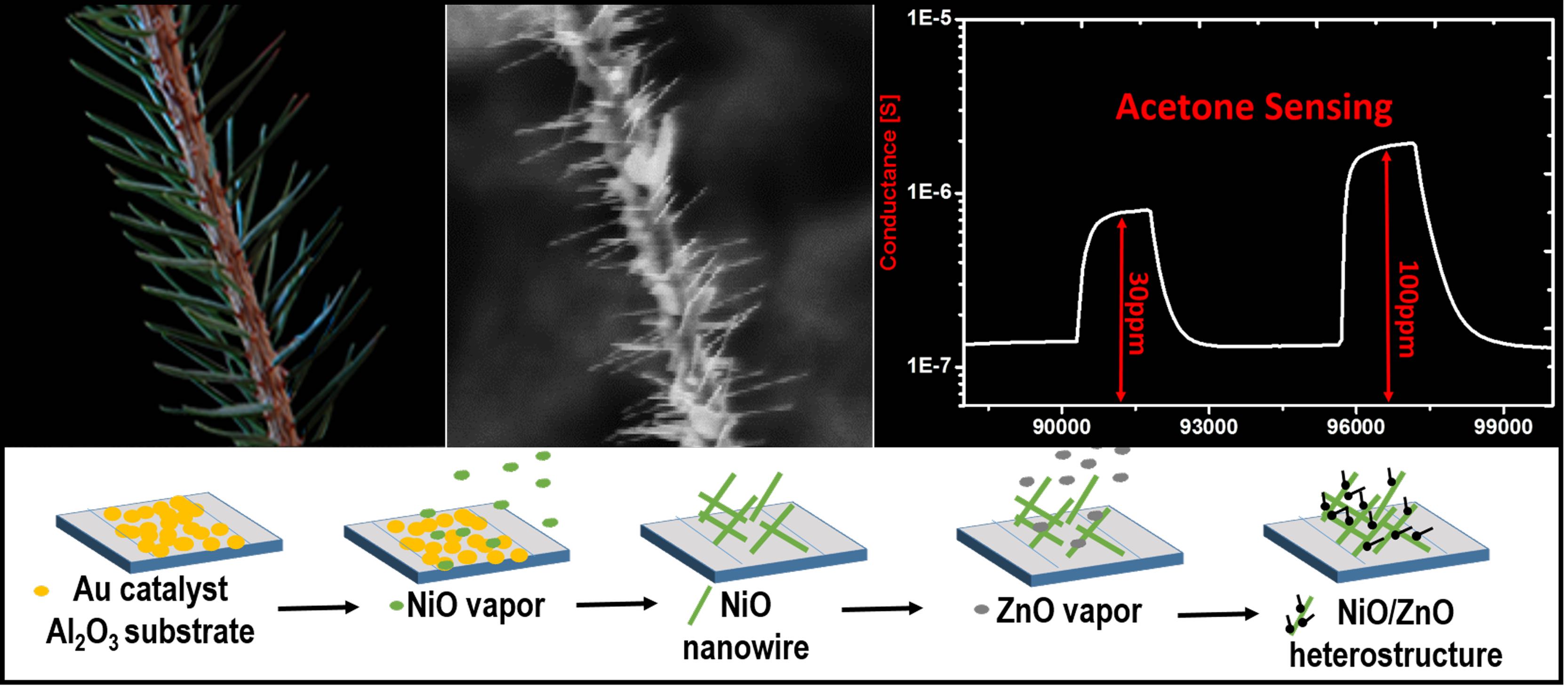Researchers use nanotechnology for better detection of hazardous chemicals
|Volatile Organic Compounds (VOC) are organic chemicals like acetone which evaporate at room temperature. They originate from many sources ranging from certain plants to exhaustion gases of cars. Normally their concentration in the environment is so low that they don’t cause any effect, but they become a problem when they occur in closed spaces such as flats or offices. Although most of the VOC are not immediately toxic, long-term exposure can cause various health problems such as asthma and, in worst-case scenarios, even cancer. For these reasons many governments have implemented laws that define limits on VOC emission values in indoor spaces. However, the control of these values is not easy, since the concentration of the VOC is usually very low. Furthermore, the exposure needs to be monitored over a long time. This requires small detectors that fit in most spaces, with a high sensitivity even for small concentrations.
 Most of the detectors are electrochemical gas sensors. They usually consist of a semiconductor in which the VOC is oxidised or reduced. This reaction induces an electrical current which is the detection signal. Such detectors are small and well developed, but they lack sensitivity. There are two ways to overcome this shortcoming: firstly, with the use of nanowires; secondly, by combining different semiconductors. Nanowires, i.e. very long wires with a diameter of a few nanometres, have a big surface to “catch” and detect VOCs. Hetero semiconductors, which are made out of two different semiconductors, have a high enough conductivity to detect even small electrochemical reactions. Unfortunately, nowadays the production of hetero-semiconductor nanowires is very costly.
Most of the detectors are electrochemical gas sensors. They usually consist of a semiconductor in which the VOC is oxidised or reduced. This reaction induces an electrical current which is the detection signal. Such detectors are small and well developed, but they lack sensitivity. There are two ways to overcome this shortcoming: firstly, with the use of nanowires; secondly, by combining different semiconductors. Nanowires, i.e. very long wires with a diameter of a few nanometres, have a big surface to “catch” and detect VOCs. Hetero semiconductors, which are made out of two different semiconductors, have a high enough conductivity to detect even small electrochemical reactions. Unfortunately, nowadays the production of hetero-semiconductor nanowires is very costly.
The research team around Navpreet Kaur and Elisabetta Comini from the University of Brescia, Italy, is working on the improvement of the manufacturing processes for nanowires and nanowire-based heterostructures. In a recent publication* they describe a novel manufacturing method for nanowire heterostructures of nickel oxide / zinc oxide semiconductors. The elegance of the approach is that they used a well-established method in a two-step process. At first, nickel oxide nanowires were grown with a vapour-liquid solid method in which the nanowire grows with the help of a catalyst between the gas and the liquid phase. Afterwards researchers used this nickel oxide nanowire as a backbone to grow zinc oxide nanowires on its surface. The structure of the hetero-semiconductor nanowires was confirmed by high-resolution TEM measurements at the Romanian CERIC Partner Facility, the LASDAM laboratory at the National Institute of Materials Physics in Bucharest. The first gas sensing tests of the new semiconductor show promising results for future applications and may lead to better gas sensing devices for VOC in the future.



